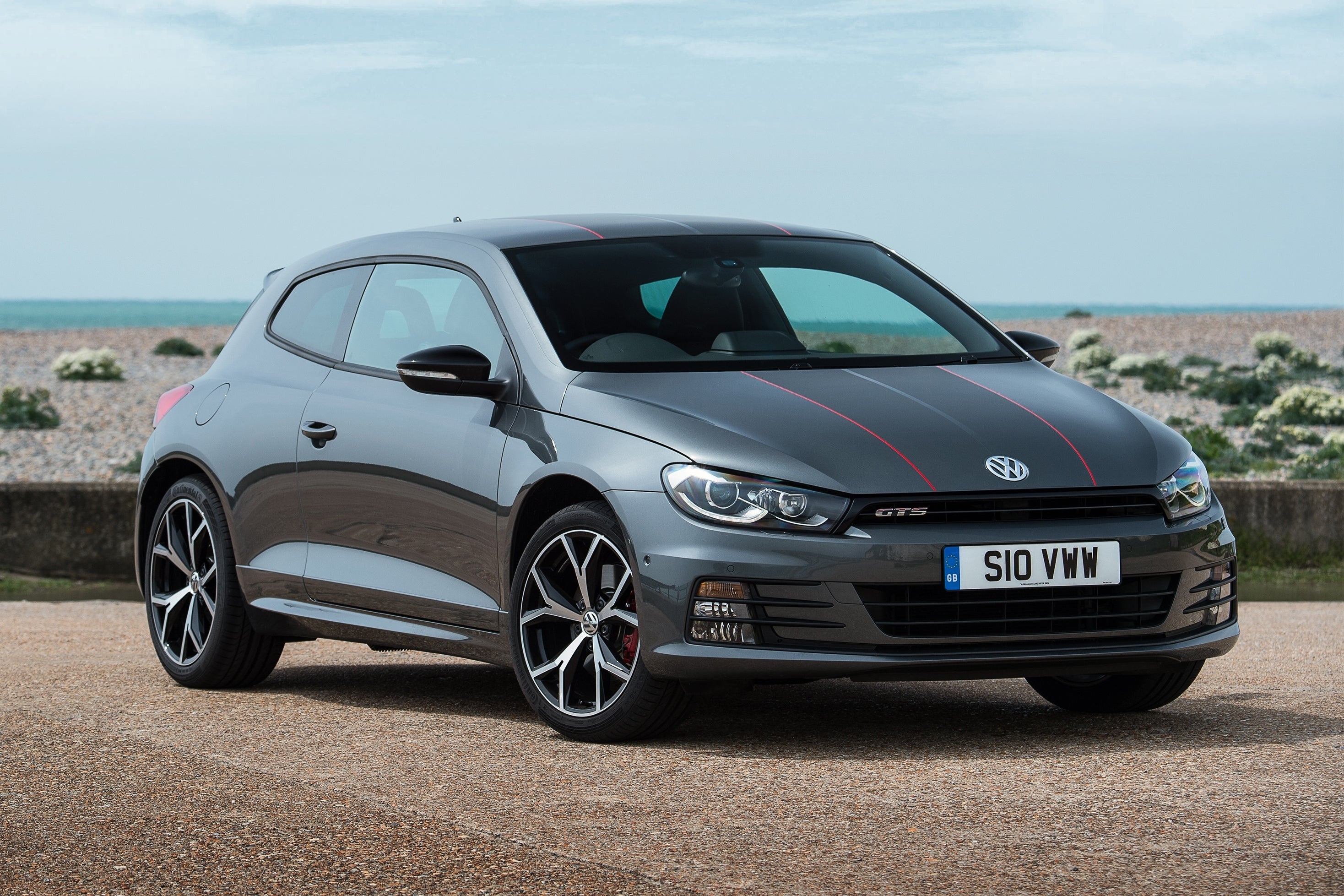Volkswagen Scirocco (2008-2018) Review
Written by Andrew Brady
Quick overview
Pros
- Looks great inside and out
- Enjoyable and comfortable to drive
- More practical than you might think
Cons
- Limited safety kit by modern standards
- Not particularly cheap to run
- Rear seats tricky to get in to
Overall verdict on the Volkswagen Scirocco
"In this Volkswagen Scirocco review we're looking at a four-seater coupe in the traditional sense of the word. The Scirocco doesn't have four doors and isn't just a hatchback with ideas above its station - it might be based on the Volkswagen Golf but it has a unique exterior design to catch the eye and plenty of driving appeal too."
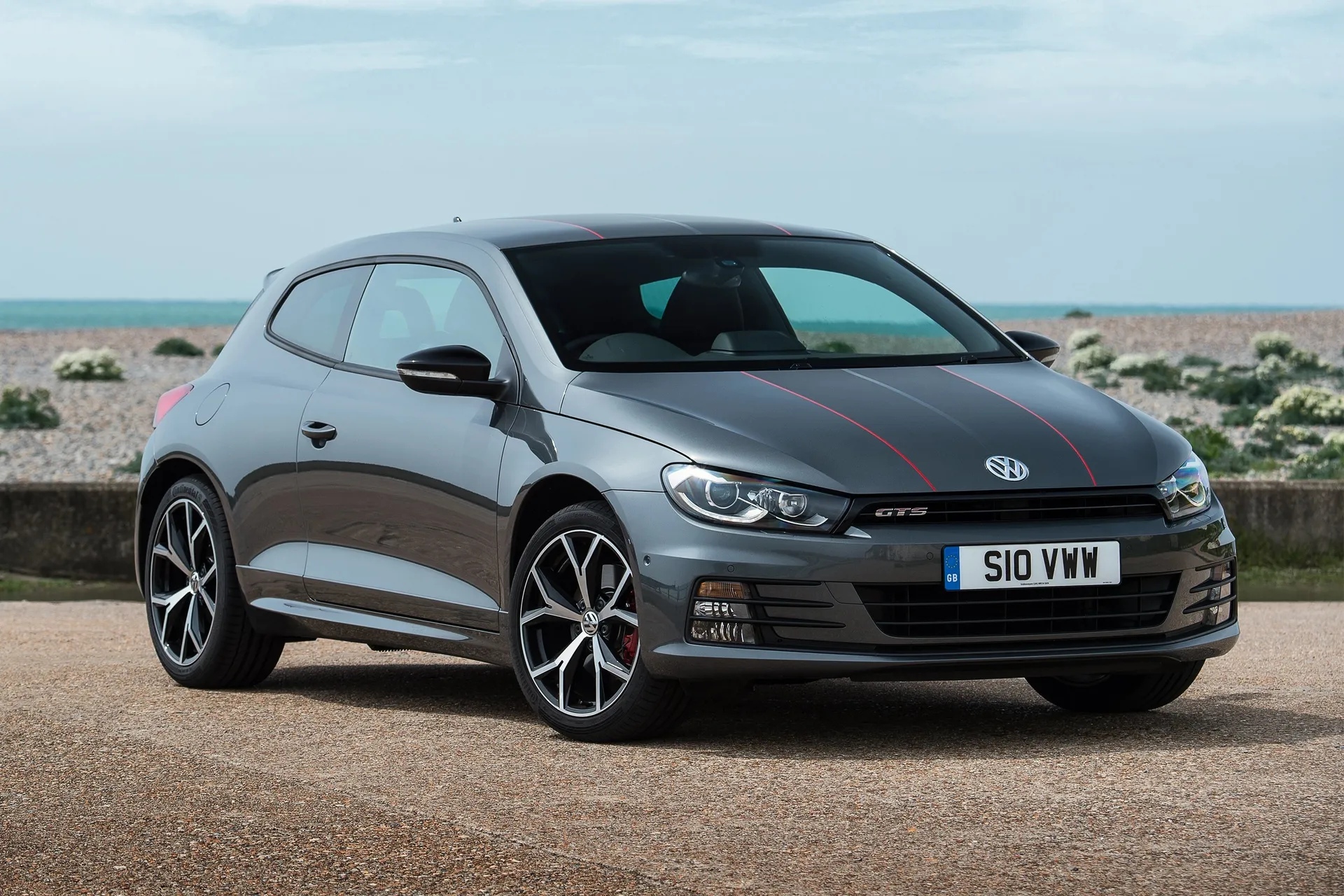
Possibly the most remarkable thing about the Volkswagen Scirocco is how well it has aged. Having been released in 2008, this car is a proper old-timer in car terms. And yet, this Golf-based coupe has grown old incredibly gracefully.
Even today, it still looks the part, with its slinky lines and its swish details, and although the slightly dated cabin design is a small indicator of the car’s age, the interior is still hugely impressive in terms of its quality and solidity. It may be old, but it’s still very desirable. Think of a grey-haired George Clooney in one of those coffee adverts, and you’re about there.
It’s still pretty light on its feet for an old boy, too. The suspension provides a good blend of comfort and control, meaning the car can keep up with most young whippersnappers in the bends, but not at the expense of a ride that’s bone-shaking enough to dislodge a hip. The engines haven’t lost it, either, with plenty of performance from most of them, along with really impressive refinement.
The Volkswagen Scirocco is still reasonably useful from a practicality perspective, too. It only has four seats, but the ones in the back have a surprisingly generous amount of space, and the boot is a very useful size. Sure, it’s not as roomy or as versatile as a conventional hatchback, but if you were that worried, you’d just buy a Golf instead.
Granted, there are one or two areas in which the Volkswagen Scirocco can’t conceal its age. The steering is a little slow by modern standards, fuel economy is no great shakes and some of the cleverer safety kit that’s now widely available on far more affordable models - things like automatic emergency braking and lane departure warning - is not offered at all.
A rather dated infotainment with no Apple CarPlay or Android Auto stops the Volkswagen Scirocco from being totally ‘down with the kids’, too. Otherwise, though, there’s no doubt that the Volkswagen Scirocco has still got it, and if you’re after glamour and fun at a reasonable price, there’s a lot to like.
Looking for a used car for sale? We've got 100s of Volkswagen Approved Used Cars for Sale for you to choose from, including a wide range of VW Scirocco cars for sale.
Is the Volkswagen Scirocco right for you?
For some people, the form of things is more important than the function, and it’s for those people that the Volkswagen Scirocco was designed. Yes, it’s not as practical or as versatile as the Golf hatchback on which it’s based, but it’s a sight more glamorous, it’s even more desirable, yet it still has four seats capable of seating adults, and a big boot.
Like the Volkswagen Golf, it’s also really impressive on build quality, and it’s also fun-yet-comfortable on the road, albeit with a slightly sportier edge. Yes, there are various premium coupe rivals that deliver a similar blend of fun, style and desirability, but few combine these factors with practicality and civility as well as the Volkswagen Scirocco does. A very solid choice for buyers who want a glamorous all-rounder.
What other cars are similar to the Volkswagen Scirocco?
As a premium-badged coupe based on the all-conquering Volkswagen Golf, the Scirocco had a variety of rivals ranging from genuine bespoke coupes to jumped-up three-door hatchbacks. Sitting in the former category would be cars such as the Audi TT, while sitting in the latter would be rivals such as the Vauxhall Astra GTC and BMW 1 Series Coupe (this last one looks more like a saloon than a hatchback, but you get the picture). You could also put the Hyundai Veloster and Peugeot RCZ in there.
Comfort and design: Volkswagen Scirocco interior
"The Volkswagen Scirocco’s sporty seats provide plenty of support, along with lots of side bolstering to hold you snugly in place as you go around corners. There’s also bags of adjustment for both the seat and steering wheel, allowing drivers of all shapes and sizes to get comfy, and if you go for an R-Line model, your leather trimmed seat moves electrically, making life even easier."
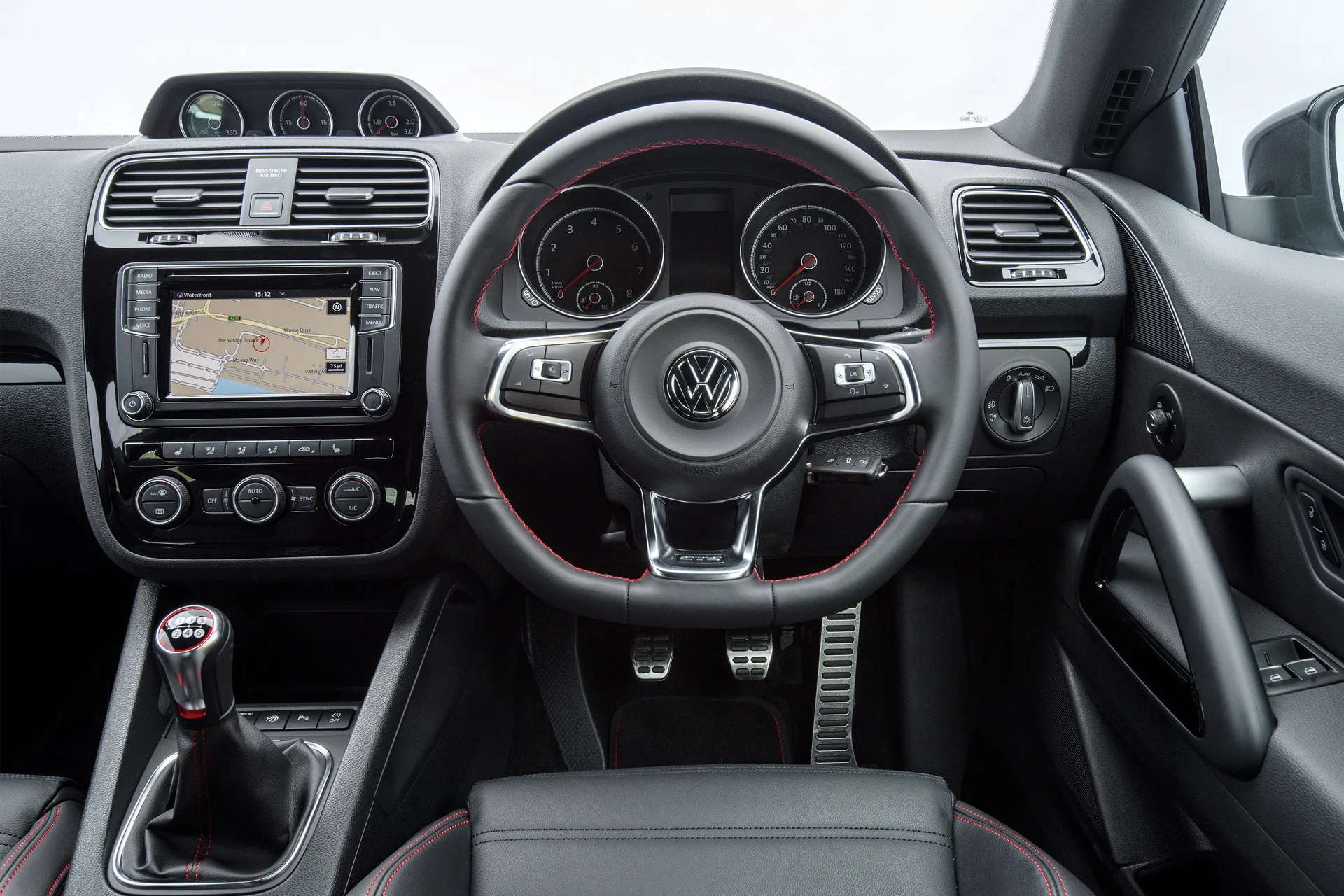
The dashboard layout, meanwhile, couldn’t be simpler. There aren’t many switches or buttons - just those for the air-con plus a few more - but everything is placed exactly where you’d expect to find it, and well marked so you know at a glance what everything does.
You’ll have no complaints about front visibility, and although the pinched styling of the rear end, means smaller windows and thicker rear pillars that in a conventional hatchback, your over-the-shoulder view is still a sight clearer than in most rival coupes. That said, you do have to upgrade to GT trim if you want parking sensors for a bit of extra help when manoeuvring.
Quality and finish
Being based on the Golf of the time, you wouldn’t expect the Volkswagen Scirocco to struggle in providing a classy environment for its occupants, and so it proves.
The materials used are every bit as high-grade as those in the Volkswagen Scirocco’s hatchback sibling, so there are plenty of soft-touch surfaces, along with metallic trims on the dashboard, door pulls and air vents to add an extra touch of class. One or two tougher surfaces are detectable lower down if you really hunt for them, but they’re tucked away out of sight if you don’t.
What’s more, there’s real solidity about the way everything is assembled, which not only contributes to the sophisticated atmosphere, but it also gives the car a built-to-last feel. All versions get a chunky, leather-wrapped steering wheel, while the various trim grades get differing upholstery, but they all feel posh.
Infotainment: Touchscreen, USB, nav and stereo in the Volkswagen Scirocco
To begin with, the entry-level Scirocco came with a stereo that used a 5.0-inch touchscreen interface and also came with Bluetooth, a CD changer (remember those?) and an FM/AM radio. The GT version and above got an upgraded system with a 6.5-inch display and sat-nav, and later on in 2012, this higher-spec system was made standard across the board. It was also updated in 2014 to incorporate DAB radio, Volkswagen never made it as far as applying Apple CarPlay or Android Auto.
The system may be a little dated by modern standards, but for the time, it was really good. The shortcut buttons and logical controls made it relatively easy to use, while the software was fairly slick and the graphics were reasonably sharp.
Space and practicality: Volkswagen Scirocco boot space
If you were that concerned about practicality, you’d buy a Golf instead, but even so, the Volkswagen Scirocco does better here than you might imagine.
The front seats have loads of space - as is almost always the case with modern cars - and while the two rear chairs are a wee bit snug on headroom, there’s a surprisingly generous amount of rear legroom. Six-foot passengers might have to scooch down in their seat a bit to fit, but fit they will, and in reasonable comfort.
Getting in and out will take some contortionism, though, due to the slender space between the door frame and driver’s seat that you have to clamber through, and if you do manage to wedge child seats into the back, this will also make loading small children rather difficult.
The boot is bigger than you might think, though, so weekend trips away aren’t out of the question. There’s a large lip that you’ll have to muscle heavy items over before dropping them in the other side, but that’s the case on all cars like this. The rear seats are split 50-50 and fold down to let you increase your cargo-carrying capacity, but the backrests don’t lie flat.
The Volkswagen Scirocco dimensions are 4256mm long, 1810mm wide and 1404mm tall.
Handling and ride quality: What is the Volkswagen Scirocco like to drive?
"The Volkswagen Scirocco certainly looks sportier than the Golf with which it shares most of its mechanics, and the driving experience is a wee bit sportier, too. It has a lower centre of gravity than its stablemate, not to mention a wider track, and this helps it feel even more stable when you’re changing direction."

There’s bags of grip and tight body control, while the steering is reassuringly weighty, if a little bit slow by modern standards. The handling always stays balanced and neutral, making the car thoroughly predictable in its responses, not to mention quite a lot of fun
The ride is a touch on the firm side, as you’d expect in a car like this, but it never ventures into the realms of being uncomfortable, whatever your speed and whatever the surface you’re on.
Adaptive Chassis Control was optional on most models, and this was an adaptive suspension that allowed you to make the suspension stiffer or softer depending on how playful you were feeling. You can notice the subtle differences between the various modes if you really concentrate, but the system doesn’t really make a great deal of difference to how comfortable or enjoyable your Volkswagen Scirocco is, so it’s certainly not a must-have option.
What engines and gearboxes are available in the Volkswagen Scirocco?
The turbocharged engines on offer in the Volkswagen Scirocco changed quite a bit throughout the car’s lifetime, with regular tweaks to power outputs and efficiency figures.
The entry-level 1.4 petrol, for instance, started life with 122PS, and was later hiked to 125PS. Either way, it was nice and flexible, making it easy to drive, but it wasn’t particularly fast, so it suits those who want the Scirocco for its looks and not its speed.
Another 1.4 with 160PS was also offered and this felt a good bit perkier, so we reckon this is the one that’ll suit most drivers. We never tried the 180PS version of the 2.0-litre petrol engine, but it was also available with outputs of between 200PS and 220PS depending on the age of the car, and these were absolutely fabulous.
They gave the Volkswagen Scirocco proper hot-hatch pace (not surprising when these were the same engines found in the Golf GTI) and not only were they strong, smooth and effortlessly flexible, they were also keen to rev and they sounded great. The 2.0-litre petrol engine in the R, meanwhile, had either 265PS or 280PS depending on when it was built, but we never got to try this version.
The diesels were also pretty brisk. The entry-level one had between 140PS and 150PS depending on build date, and the higher-powered option developed between 170PS and 184PS. However, their inherent reluctance to rev meant they didn’t feel as overtly sporty as the petrol, so these are best if you’re after a relaxed cruiser rather than a hot-hatch beater.
Most versions were offered with a choice of either a six-speed manual gearbox or Volkswagen’s twin-clutch DSG automatic. Both are ace, frankly, delivering satisfyingly slick shifts.
Refinement and noise levels
All of the Volkswagen Scirocco’s petrol engines serve up their performance in a really smooth and cultured way. Even the small ones don’t sound too harsh when you rev them hard, and you won’t be subjected to too much in the way of vibration, either.
The 2.0-litre ones, meanwhile, are even smoother, and sound satisfying throaty when you extend them. The diesels are a wee bit noisier than the petrol, with a bit more clatter at idle and with a few revs on the dial, but they’re far from raucous and are still impressively quiet and smooth compared with those in rivals.
The Volkswagen Scirocco’s slippery shape helps contain wind noise on the motorway very effectively, and although the wide tyres do kick up a bit of road noise, it’s nothing that’ll have you hollering to be heard. The suspension doesn’t make too much noise as it goes about its work, either.
Safety equipment: How safe is the Volkswagen Scirocco?
The Volkswagen Scirocco comes with six airbags to help keep you from harm in a smash, and electronic stability control to help keep you from having one in the first place. However, it doesn’t get much cleverer than that.
The latest systems that are now widespread through the car market - things like automatic emergency braking and lane departure warning - aren’t offered. However, before we judge the Volkswagen Scirocco too harshly, we must remember that this is quite an old car, and by the standards of the day, it did a more-than-reasonable job. It was tested by Euro NCAP in 2009, not long after its release, and it achieved the full five-star rating.
MPG and fuel costs: What does a Volkswagen Scirocco cost to run?
"Volkswagen’s regular meddling with the engine range meant that precise fuel economy figures changed over time, especially when Bluemotion Technology (engine stop-start and battery regeneration) was introduced to a variety of the engines available. Broadly speaking, the official figures suggest that buyers of the 1.4s can expect around 45mpg, and around the same from the 180PS version of the 2.0-litre."
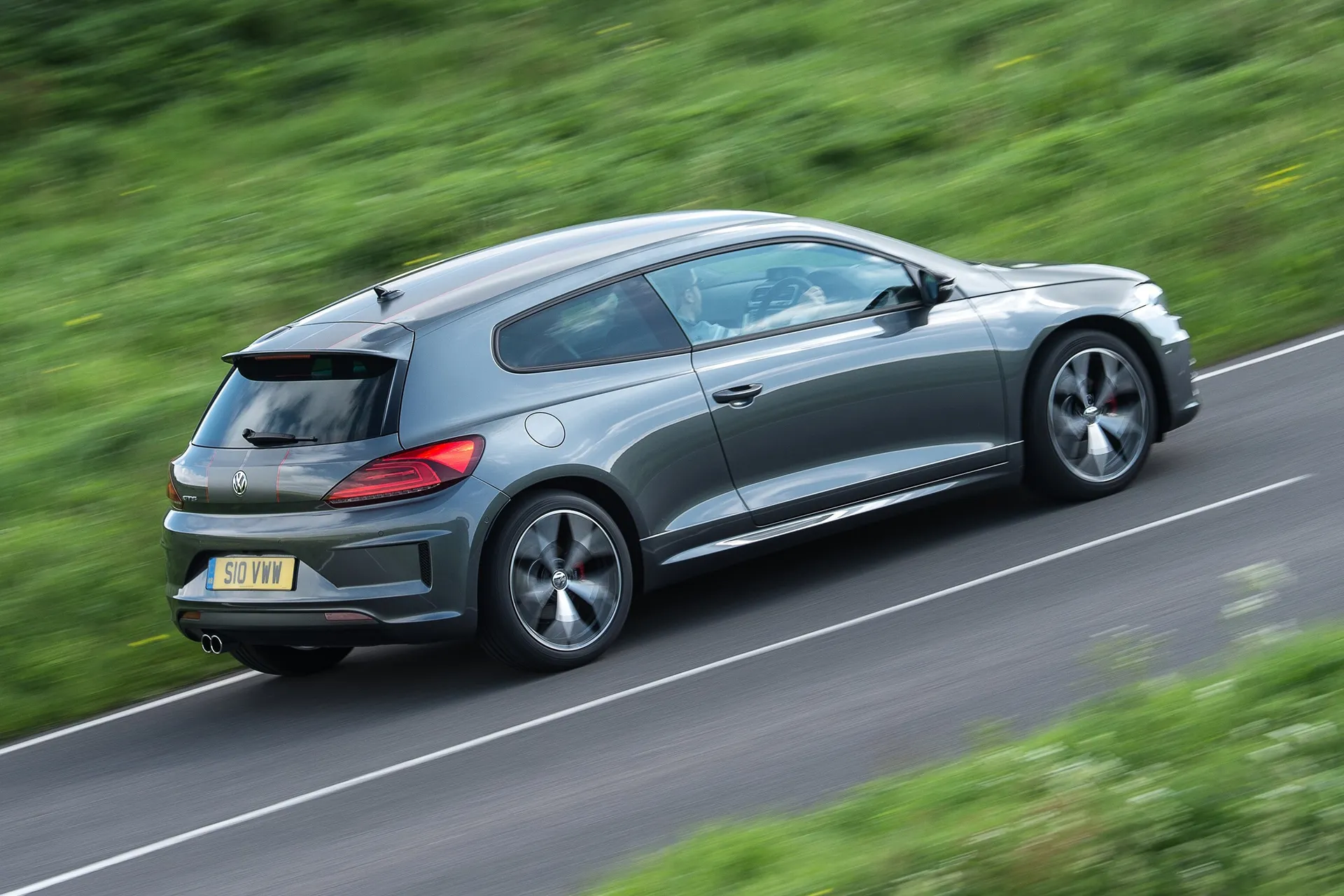
The more powerful version of the regular 2.0-litre is a little thirstier at around 38mpg, while the R is thirstier still with 34mpg. The weaker of the diesels is the pick of the bunch on this score with a figure of 62mpg, while the more powerful one gets 55mpg. Remember, though, that these are old-school NEDC figures that are laboratory tested, and will be extremely difficult to replicate in the real-world.
How reliable is a Volkswagen Scirocco?
Thankfully there have been few reported issues with the Volkswagen Scirocco, with minor quibbles such as boot mechanisms and audio system gripes being the worst of it. One thing to be aware of is problems with earlier DSG gearboxes, so a full main dealer service history is a must.
As a brand Volkswagen finished a solid 10th place out of 30 manufacturers overall in the HonestJohn.co.uk Satisfaction Survey.
Insurance groups and costs
The Scirocco’s insurance groupings begin at 18 for the most basic version, and rise to 36 for the most-high-grade of the regular version. Considering that insurance groupings run from 1 to 50, 1 being the cheapest and 50 being the most expensive, premiums won’t be cheap, but they won’t be intolerable, either. Just make sure you’ve got a decent no-claims bonus before buying one of the pokier ones. Speaking of which, the R sites between groups 34 and 39, depending on spec.
VED car tax: What is the annual road tax on a Volkswagen Scirroco?
On April 1st 2017, the VED tax rules changed to apply a flat annual rate of £165 to all petrol and diesel cars costing below £40,000, so if you find one of the handful of cars that was registered after that date (it was discontinued a few months later), that’s precisely what you’ll pay.
There’s quite a bit of variation in tax costs for cars registered before that, as these are taxed according to their CO2 emissions. Go for the weaker diesel and you could pay anywhere between £20 and £125. The more powerful diesel sits at £165, as does the less powerful of the two 1.4 petrol.
The more powerful of the pair commands VED of £205, which strangely, is more than you’ll pay on the 2.0-litre offerings, which will be anywhere between £150 and £240. When buying one, a quick online search of the car’s registration should show you what the situation is for that particular example.
How much should you be paying for a used Volkswagen Scirocco?
"Because it's been around for so long there are plenty of used examples of the Volkswagen Scirocco, and at a variety of budgets too."
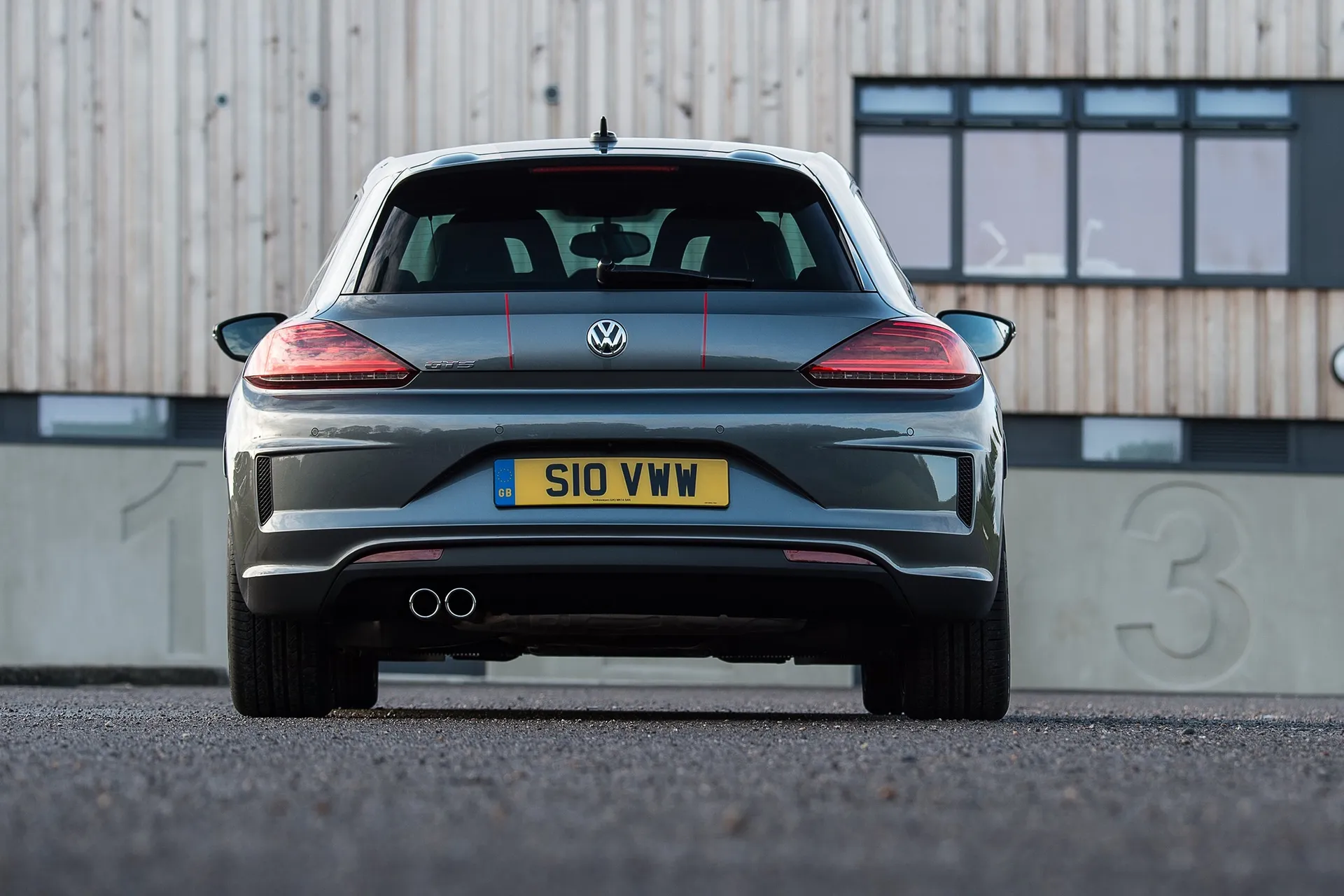
The earliest cars are now old enough to be taking their GCSE exams which means bargain basement prices, but also mileages that would make a taxi driver blush. Less than £4,000 will get you a choice of engines and specs, but also at least 100,000 miles on the clock.
Around £7,000 will get you something newer and with a more reasonable mileage, while the pick of the cars are from around £11,000 upwards. We found a 2016 2.0 TDI in GT spec with 50,000 miles for £13,000.
There are still last-of-the-line examples that are barely run in. We also found a 2018 2.0 TSI with just 22,000 miles for £17,500.
Trim levels and standard equipment
Various special editions and limited-run versions were offered throughout the Volkswagen Scirocco’s life, but mainly, the trim structure was based around four trim levels, Standard, GT, R-Line and R. Precisely what equipment was included changed a wee bit over time, with early cars getting a bit less than newer ones, so factor that in when choosing a car.
Broadly speaking, the standard Volkswagen Scirocco came with plenty of luxuries including manual air-conditioning, automatic lights and wipers, alloy wheels, electric front windows and electric front windows, on top of all the safety and infotainment kit we mentioned earlier. However, you might be tempted to upgrade to Volkswagen Scirocco GT trim for its front foglights, two-zone climate control, front and rear parking sensors and part-alcantara (synthetic suede) upholstery.
Volkswagen Scirocco R-Line cars get a range of additional styling goodies inside and out, along with electrically adjusting leather seats. R models come with more styling touches and an adaptive suspension, on top of its crackerjack of an engine.
Ask the heycar experts: common questions
Is the Volkswagen Scirocco reliable?
What is the difference between this car and the Scirocco R and GTS models?
Does Volkswagen still produce the Scirocco?
What is DCC and should I get it?
How many different body styles were there?
Get our latest advice, news and offers
Keep me updated by email with the latest advice, news and offers from heycar.
By submitting you agree to our privacy policy
